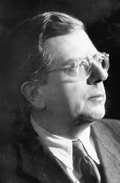
Hans Brehme achieved recognition as one of Germany’s most gifted young composers during the years of the Weimar Republic, and his fame grew during the Third Reich. A highly skilled pianist, he often performed his own works. At the Berlin Tonkünstlerfest in 1935, his Sextett op. 30 was cited by critics as the most important composition presented at the festival. His opera Der Uhrhmacher von Straßburg of 1941 received high praise and was compared favorably to the dramatic works of Wagner and Pfitzner. Although Brehme fell into relative obscurity following World War 2, he left a legacy of important compositions, one of which is the substantial Sonata for Alto Saxophone & Piano, op. 25, composed in 1932 for legendary saxophonist Sigurd M. Raschèr. Fully 75 years after its composition, and 50 years following the composer's death, the Sonata finally became commercially available when Ethos Publications released a scholarly edition of the work for the first time.
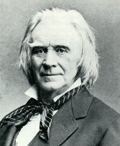
Norwegian violinist Ole Bull was a flamboyant virtuoso who modeled himself in a fashion after the great Paganini. He was lauded by such figures as Franz Liszt and Robert Schumann, and performed with Liszt a few times. He concertized throughout Europe and made several trips to the United States, typically performing popular music and folk tunes of his native land as an integral part of his programing. During the height of his performing career, he became involved in the political movement aimed at securing Norway's independence from Sweden, which eventually occurred a quarter century after his death. In 1850, he helped establish the first theatre in which Norwegian was spoken from the stage, and as a composer his efforts were largely focused on giving voice to a nationalistic music for Norway. He earned considerable admiration from his countrymen for his efforts, and his most popular tune, “Saeterjentens Søndag” became one of Norway's most beloved songs.

William Calhoun established himself as a versatile composer and arranger at the same time he was pursuing his full–time career as a public-school music teacher in the Finger Lakes region of central New York State (U.S.A.). He retired from public–school teaching in 2010 after 24 years with the Ithaca City School District, having previously taught in the nearby Cortland City School District and in Holley, N.Y. before that. An experienced percussionist and percussion teacher, he also worked as a drum and bugle corps instructor for many years. Mr. Calhoun earned the bachelor of music degree in applied music and music education from Ithaca College and the masters of music from Mansfield University of Pennsylvania.
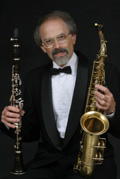
A performer and teacher of both clarinet and saxophone, Ronald Caravan has composed music for the single–reeds in a variety of styles, from harmonically conservative modal sonatas to solo and chamber works using non–conventional sounds. Dr. Caravan was a faculty member of the Syracuse University School of Music for 35 years (1980–2015) where he taught clarinet and saxophone and directed the Syracuse University Saxophone Ensemble. He earned the Performer’s Certificate on clarinet from the Eastman School of Music, as well as the Doctor of Musical Arts in Music Education and Master of Arts in Music Theory. As a performer, Dr. Caravan has broad experience as a solo and chamber-music recitalist as well as a clinician. He also occasionally performs with the Syracuse Symphony (“Symphoria”) as a saxophonist as well as a clarinetist. He is recorded in performance with the Saxophone Sinfonia (Golden Crest and Dorn Productions), the Aeolian Saxophone Quartet (Ethos Recordings), and the Society for New Music (Innova Recordings). More recently, his 8-volume series of CD recordings, “Single Reed Expressions,” in collaboration with pianist Sar Shalom–Strong, was officially released by Mark Records in January 2017. The series of individual CDs totals upwards of 70 pieces about evenly divided between clarinet and saxophone (alto & soprano) and totals just under 575 minutes of music all together. Dr. Caravan has served as president of the North American Saxophone Alliance and is presently Woodwind Review Editor for the New York State School Music News. He also has developed a line of clarinet and saxophone mouthpieces specially designed for "classical" performance.
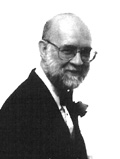
A resident of Reading, Pennsylvania (U.S.A.), Erwin Chandler has maintained a varied musical career in performance, teaching, and composition. He has received numerous commissions and awards, including the prestigious George Washington Medal of Honor for high achievement in composition for his work The Constitution (Valley Forge Freedom Foundation) for narrator, chorus, and orchestra/band. His compositions have been performed in Europe as well as throughout the United States. He has received numerous Meet the Composer grants for appearances at colleges and high schools when he has served as a guest lecturer, clinician, and/or conductor of his own compositions. He studied composition with Warren Benson, William Mayer, Juan Orreggo–Salas, and Bernhard Heiden. He earned the B.S. degree in music education from Ithaca College (N.Y., U.S.A.) and the M.S. degree in performance from Indiana University (Bloomington, Ind., U.S.A.) where he studied horn with Philip Farkas, former principal horn with the Chicago Symphony and author of The Art of Horn Playing and The Art of Brass Playing. He has played principal horn for the Reading Symphony Orchestra, the Pottstown Symphony Orchestra, and the Alleghany Music Festival Orchestra, and has also performed with the American Wind Symphony Orchestra (Pittsburgh) and the Reading Brass Quintet. He is also co–founder of the Berkshire Brass Quintet. His teaching positions have included the Port Jervis (N.Y.) public schools, Murray State University, Lebanon Valley College, Interlochen National Music Camp, Tidewater Music Camp, Garden Spot High School (New Holland, Pa.), and the Milton Hershey School (Hershey, Pa.).
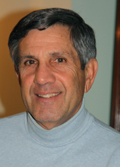
James Corigliano is a 1967 graduate of SUNY Fredonia where he earned both a bachelors and masters degree in music education, majoring in saxophone and clarinet. He is a retired instrumental music teacher from Guilderland Central Schools, near Albany, N.Y. USA. He taught at Guilderland for 28 years, and has a total of 32 years of service to public-school instrumental music. Mr. Corigliano was an adjunct music faculty member at the College of St. Rose and was on the music faculty of Schenectady County Community College until 2009. As a professional musician, he has performed with numerous ensembles in the Albany area, including the Albany Symphony Orchestra, the Schenectady Symphony Orchestra, St. Cecilia Orchestra, the Schenectady Light Opera, Proctors Theatre pit orchestra, and the Starlight Theater Orchestra. He has been a member of the Empire Jazz Orchestra and the Adirondack Saxophone Quartet, and has performed with numerous jazz combos and big bands in the Capital District. He has served on the board of directors of the Empire State Youth Orchestra, founded the ESYO Jazz Ensemble, and conducted the ESYO Rep Orchestra. As a composer, Mr. Corigliano has numerous published compositions to his credit, including some published by Shawnee Press and Ethos Publications. Several of his compositions are in the NYSSMA manual, and he has written for many professional groups, including the Empire Jazz Orchestra, for whom he wrote the arrangements for the Colleen Pratt CD, “I Thought About You”. He resides in the town of Knox near Albany with his wife Jo Ann.
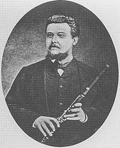
Jules Demersseman was only 11 years old when he entered the Paris Conservatory as a flute student of Jean–Louis Tulou. A year later he won the premier prix (first prize) in flute performance. While his fame grew as a young flute virtuoso, he also began composing, initially for his own instrument. Before long he befriended instrument maker Adolphe Sax and became one of the first composers to write for his friend’s new brass woodwind instrument, the saxophone, introduced by Sax around 1841 and patented in Paris in 1846. Demersseman's compositional style was typical of the light–classical genre of his day, often embodying familiar musical elements of the popular Paris opera with which he was so familiar. He died at the early age of 33 evidently from tuberculosis.
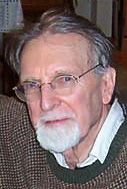
Robert L. Donahue earned degrees from the University of Wisconsin, Madison and the University of Illinois, Champaign–Urbana before completing his doctorate in composition from Cornell University in Ithaca, NY. His composition teachers have included Cecil Burleigh, Hunter Johnson, Robert Palmer, Benjamin Johnston, and Karel Husa. He has taught at the University of Wisconsin, Oshkosh and Spelman College in Atlanta, where he retired in 1999. He has over eighty publications of educational piano music, choral music, and instrumental ensembles. He has been commissioned to write works for saxophone. His Sonata #3 was a prizewinner in the Delius Festival. He has written sight–reading music for the Georgia Music Educators Association’s Festivals. He is a member of the Southeastern Composers League, Society of Composers, Inc., American Music Center ,and ASCAP where he has won ten special awards.
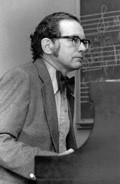
Walter S. Hartley began composing at age five and became seriously dedicated to it at age sixteen. He earned all of his college degrees from the Eastman School of Music of the University of Rochester. He received his Ph.D. in composition in 1953. Some of his teachers were Burill Phillips, Thomas Canning, Herbert Elwell, Berhard Rogers, Howard Hanson, and Dante Fiorillo. Dr. Hartley served as Professor of Music at the State University of New York at Fredonia from 1969 until his retirement from teaching. He also taught piano, theory, and composition at the National Music Camp (Interlochen, Michigan). One of America’s most highly respected composers, Dr. Hartley composed over 200 works, dating from 1949, nearly all of which are published. He was a member of the American Society of Composers, Authors, and Publishers (ASCAP), from which he received an award for achievement in serious music every year during his career starting in 1962. Dr. Hartley’s compositions have been performed by many ensembles, including the National Symphony Orchestra, Oklahoma City Symphony, Eastman-Rochester Orchestra, the Eastman Wind Ensemble, and the University of North Texas Wind Symphony. He received numerous commissions from both professional and academic sources. Several of his band works were commissioned by U.S. service bands and his music has been performed widely around the world.
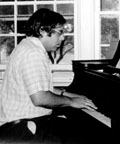
Growing up in New York City, Brian Israel’s compositional talents were recognized at an early age. He composed his first opera at age 7 and at age 14 had his first piece performed, a sonata for cello. A gifted pianist as well as a composer, his education included study at the Herbert H. Lehman College of the City university of New York, where he received the bachelor of arts degree. Subsequent study at Cornell University earned him the master of arts and doctor of musical arts degrees in composition. He earned numerous awards during his career, among them Cornell University’s Otto Stahl Award for piano performance, election to Phi Beta Kappa, and two student composer awards given by the performing rights organization B.M.I. Dr. Israel joined the faculty of the Syracuse University School of Music in 1975 where he taught theory and composition. His composing, teaching, and performing career was cut short by his untimely death May 7, 1986 from leukemia.

Virginia Johnston earned her Bachelor of Music degree in composition from Syracuse University and Master of Music degree from Boston University. While at Syracuse, she studied composition with Brian Israel and Joseph Downing as well as clarinet with Ronald Caravan, earning Performance Honors as a clarinetist in addition to her composition degree. She also studied composition with Robert Sirota and clarinet with Ethan Sloane and Bil Jackson. During her undergraduate studies at Syracuse University, she played alto and soprano saxophone for four semesters with the Syracuse University Saxophone Ensemble and composed the “Suite for Saxophone Ensemble” during the second semester of her junior year. The three-movement work, published in Ethos Publications' Saxophone Ensemble Series, is essentially a theme and variations on the famous "Lament" from Baroque composer Henry Purcell's opera "Dido & Aeneas," but differs from the typical theme-and-variations format in exposing the theme in its purest form at the end of the piece rather than at its beginning. Ms. Johnston remains active as a composer, conductor, and clarinetist in her native New Jersey where she resides with her husband, jazz pianist and recording artist Dan Crisci, along with their two young children.
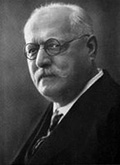
Hugo Kaun developed his musical talents at an early age and by age 16 was already enrolled in the Berlin Hochschule Für Musik. He later studied piano with Karl and Oscar Raif and composition with Friedrich Kiel at the Prussian Academy of Music. In 1886, Kaun left his native Germany and came to the United States, settling in Milwaukee, Wisconsin where there was a large and culturally rich German community. He was soon conducting the Milwaukee Liederkranz and the Männerchor, and helped establish the Wisconsin Conservatory of Music where he also became a professor. By the turn of the century, he had become a highly recognized composer in the U.S. and several of his works were performed by the Chicago Symphony Orchestra. Kaun returned to Germany in 1902 and settled in Berlin where he continued his composing and teaching career. Kaun’s compositional style was decidedly neo-romantic, including his Suite for Saxophone “From the Mountains,” which grew out of a collaboration he had late in life with legendary saxophonist Sigurd M. Raschér, who was at the beginning of his career when Kaun composed the piece in 1932. Kaun died shortly after finishing the suite, and the piece remained unpublished until Ethos Publications produced a scholarly edition of the work in 2006.
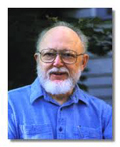
A native of Yakima, Washington (U.S.A.), John David Lamb began composing at the age of 6. Throughout his long compositional career, he has produced a broad range of works, including solos, chamber music, vocal music, and pieces for orchestra and band. He cites as his most important compositional influences his studies with Latvian composer Volfgangs Darzins and Swedish folk music and dance. He became interested in writing music for saxophone after making the acquaintance with pioneer "classical" saxophonist Sigurd M. Rascher. He remains a life resident of the Pacific Northwest where his music has been performed frequently by some of the leading professional groups and musicians of that region
A Scottish composer of the Baroque era, James Oswald’s music exhibits the melodic flavor of his native Scotland while reflecting the compositional style of the period. He first established himself musically as a fife player and dance master, then left Edinburgh for London in 1741. There he established a publishing house while continuing to compose. He was appointed Chamber Composer to King George III in 1761. Highlighting his compositional output were multiple volumes of Scottish folk tunes with variations. There is speculation that many of his compositions may have been lost or unattributed because he wrote them anonymously.
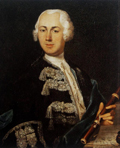
One of the most important figures in the history of flute performance and pedagogy, J.J. Quantz also distinguished himself as a skilled and prolific composer of the late Baroque era. About a dozen years younger than his great contemporaries J.S. Bach and George Frideric Handel, Quantz composed music that predominantly conformed to the late Baroque style while exhibiting certain elements of early–Classical composition, such as slower harmonic rhythm and a tendency away from extensive contrapuntal writing. A native of an area that eventually became part of central unified Germany, Quantz established himself in Dresden where the oboe was his first primary instrument. He soon switched to the transverse flute and became one of the instrument's greatest virtuosos and teachers. By around 1828, he was giving flute lessons to the young Prince Frederick in Berlin, who became king of Prussia in 1740 and is known to history as Frederick the Great. Frederick immediately brought Quantz into his court, and it was while in Frederick’s service that he composed many of his works for flute. It was also during this time period when he wrote his famous pedagogic volume “Versuch eider Anweisung die Flöte traversiere zu spielen,” considered one of the most important treatises on Baroque performance practice.
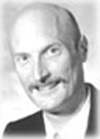
An accomplished saxophonist as well as respected composer and conductor, Mark Alan Taggart has served most of his professional career on the music faculty of East Carolina University in Greenville, North Carolina (U.S.A.). His compositions include works for orchestra, symphonic band, wind ensemble, chorus, and chamber groups. His music has been performed throughout the U.S. and Europe. Dr. Taggart earned his undergraduate degree from the University of Louisville where he studied saxophone with Lee Patrick and composition with Dan Welcher, Claude Baker, and Nelson Keyes. He then pursued graduate studies at Cornell University where he worked under the tutelage of Karel Husa, Steven Stucky, and Robert Palmer. He holds the D.M.A. as well as the M.F.A. in composition from Cornell.
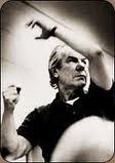
A 1934 honors graduate of the Eastman School of Music, Carl Anton Wirth quickly established himself as a respected composer and conductor in the years prior to World War 2. His musical activities took him to major U.S. venues such as Minneapolis, San Francisco, and Rochester, as well as places outside the U.S., including Indonesia. His orchestral and chamber–music output includes over 100 works. Around 1950, he met the great saxophonist Sigurd Rascher at a convention in Elkhart, Indiana, who boldly asked Wirth to compose a concerto for him. Writing a tribute upon Rascher’s 75th birthday for “The Saxophone Symposium” in 1982, Wirth recollected that he had no interest in the saxophone up to that point, but agreed to let Rascher play for him. So impressed was he with the command and musicianship Rascher displayed, he recalled commenting to a companion, “If this man played violin, you would never hear of Heifitz.” Shortly thereafter, Wirth composed his Idlewood Concerto for Rascher, and subsequently other works for saxophone, including “Jephthah” and “Portals.”
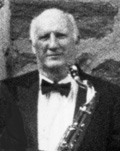
John Worley was born in Waltham, Massachusetts and earned degrees from Oberlin Conservatory and Columbia Teachers College. He taught at the University of Bridgeport, the State University of New York at Oneonta, and the University of Maine at Orno before retiring to Williamsburg, Virginia in 1996. A prolific composer as well as performer of clarinet and saxophone, Mr. Worley’s published compositions include solo and chamber works involving the single–reed instruments. He studied composition with Sir Lennox Berkeley in London and conducting with Pierre Monteux in Hancock, Maine. His compositional style reflects an unpretentious neo–romanticism.
Copyright © 2025 Ethos Publications, Inc.
All rights reserved. Use of this site constitutes acceptance of our Terms and Conditions.
Secure Shopping Powered by iShop | E-Commerce Core™